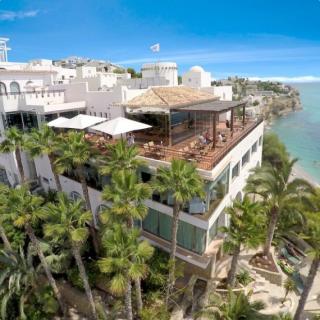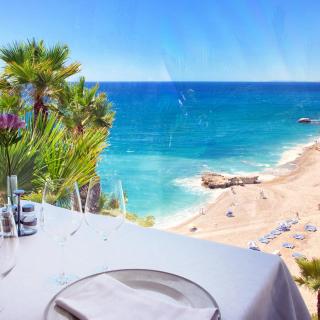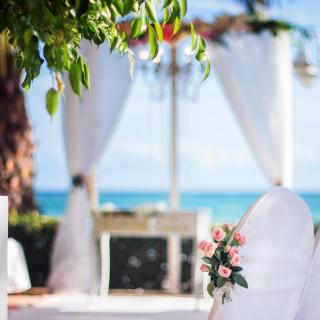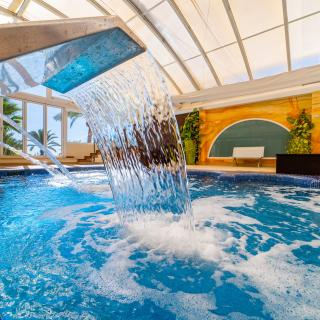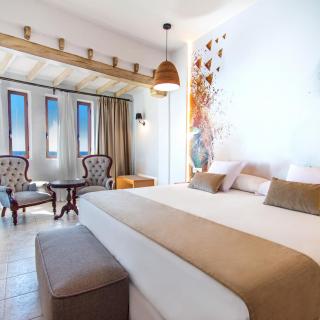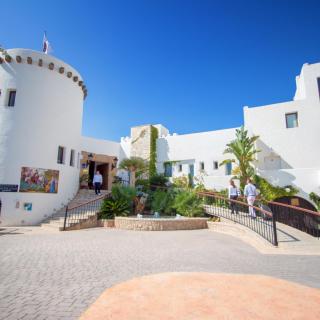03/11/2023
The 8 best places to see in Alicante
The City of Alicante is one of the most interesting capitals on the Mediterranean coast, full of endless places to visit at any time of the year. If you are planning what to see in Alicante, and wish to discover its most authentic essence and not miss any little corner, follow our recommendations and we assure you that you will enjoy like no one else, as the people of Alicante say, “la millor terreta del món” (the best land in the world).
Alicante is famous for its fantastic white sand beaches that extend along the entire coastline of the city, for its cuisine rich in speciality rice and for its festive atmosphere, that infects every visitor who chooses to walk through its streets and squares, with a taste of the sea. But what many do not know is that Alicante can also boast a rich cultural heritage that is the result of its centuries-old history.
Next, we will tour the city centre, walk along the seafront and introduce you to the most attractive places to see in Alicante on a beautiful tour of its historic old town and some of its most emblematic neighbourhoods. Let's start!

1. The Explananda de España
The Esplanade is the most emblematic street in the city of Alicante and a meeting point for locals and visitors who come out every afternoon to talk, see each other and be seen under the pleasant shade of the spectacular canopy of palm trees that decorates and protects the promenade.
But if there is something that is unique and catches everyone's attention in this area, it is the wonderful mosaic paving, traditionally known as “trencadís”, which covers the floor emulating the waves of the sea with its pattern of ivory, red and black colours. This is such a classic image of the city!
The Esplanade runs parallel to the sea, next to the marina, which makes it a very pleasant place to have an ice cream, an horchata or sit down to eat rice on any of its terraces.

2. Santa Barbara Castle
The Castle of Santa Bárbara is another of the places that you absolutely have to see on your next visit to Alicante. Don't let the slopes of Mount Benacantil stop you!
This spectacular fortress that crowns the city at more than 150 meters high has its origins in the 9th century, when the city was part of Muslim Al-Andalus, and has since witnessed the evolution of the city throughout the years. In addition to enjoying its old buildings, walls and halls, you can admire the incomparable panoramic views of the city and the entire bay from the top.
Accessing the castle is easy and comfortable, as there is an elevator that connects the fortress to the Postiguet Beach in just a minute and a half. But if you prefer not to go through the bowels of the mountain, you can also enjoy the ascent on foot through the Parque de la Ereta or by passing the walls that connect the castle with the historic centre of the city.

3. Basilica de Santa Maria
The Basilica of Santa María is perhaps the most important artistic jewel in the city of Alicante, so you cannot miss it on your visit to the city. In addition to seeing its façade and enjoying the magnificent baroque doorways that decorate the building, it is worth entering its interior and seeing the splendid golden altarpiece of the main altar, the Gothic workmanship of the temple or its outstanding collection of religious carvings that are used in the Easter procession during Holy Week in Alicante, declared of National Tourist Interest.
Visiting the Basilica and all its heritage is very enjoyable thanks to the audio guides provided from the temple, during visiting hours, in exchange for a small contribution for its maintenance. It will leave you speechless!

4. Santa Cruz neighbourhood
Santa Cruz is the most traditional neighbourhood in the city and constitutes a unique example of traditional architecture in the entire city. Many would say that it even seems like a small white, Mediterranean town, oblivious to the hustle and bustle that happens two streets away. Its narrow streets of steps intricate and charming, the climb to Mount Benacantil, in the heart of the city, at the foot of the Santa Bárbara Castle.
Without a doubt, it is one of the most special places to see in Alicante. Let yourself fall in love with the whitewashed facades full of colourful plant pots and tiles and don't hesitate to mingle with the locals of a neighbourhood that preserves the flavour of traditional Alicante.
How beautiful does that sound? Well, imagine it in the first week of the month of May when Santa Cruz celebrates its festivities and the streets are filled with flowers and decorations for the Fiesta de las Cruces (Festival of Crosses). So picturesque!

5. Central Market
It is essential to include the Central Market on your list of things to see in Alicante for two fundamental reasons. Firstly, because of its architecture. It is a unique modernist-style building that truly attracts attention for its large windows and domes. But, also, because of its history, having been bombed during the Spanish civil war, as is still remembered in the square next to the market on a commemorative plaque.
And secondly, for the pleasure of exploring its sections and seeing all the typical products of Alicante’s gastronomy fresh from the sea or land. Do you know Alicante salted fish? Walking through a market and observing the movement of its stalls is a perfect way to see the pace of life in a city like Alicante. And of course, an opportunity to taste a simple, freshly prepared dish in one of their “paraetas”.

6. Luceros Square
In the heart of Alicante and at the intersection of its most commercial avenues, is the Plaza de Los Luceros, named after the fountain that occupies the centre of the roundabout that is about to turn a century old and constitutes a true icon of the city.
The fountain was inaugurated in 1931, the work of the Alicante sculptor Daniel Bañuls and immediately attracted attention for its originality within the modernist style. The fountain stands 15 meters high and has four horses ridden by children surrounded by plant decorations and amber star-shaped tiles.
The fountain is a very special place for the people of Alicante where they go to celebrate the most important festivals such as the Bonfires of San Juan or the sporting successes of the local teams.
Not to be missed!

7. St. Nicholas Co-Cathedral.
The Co-Cathedral of San Nicolás is the largest church in the city of Alicante and one of the places you have to see on your visit to the city. The main Alicante temple is located in the historic old town, very close to the Alicante City Hall and its access is free.
The church was built in 1616 on a temple of medieval origin that in turn had been built on an old mosque. Later, and after numerous extensions and reforms, it was erected as a Collegiate Church and, in 1959, Pope Saint John XXIII designated it Co-Cathedral of the Diocese of Orihuela-Alicante.
The building has a very sober appearance that is stylistically framed between a late Renaissance and the early stages of the Baroque. Highlights include its spectacular dome, the cloister and the profusely decorated chapels of the Communion and Saint Nicholas, patron saint of the city.

8. MARQ
The Provincial Archaeological Museum of Alicante (MARQ) is the main museum of the city, although not the only one, since Alicante has several museums of great interest such as the Museum of Fine Arts (MUBAG) or the Museum of Contemporary Art (MACA) among others. The MARQ is located in the premises of the old Alicante Provincial Hospital, a beautiful palace built in 1923 that was the city's main hospital until 1991, when the health services were moved to new facilities and the building became a museum.
In the MARQ there are the most outstanding archaeological finds in the province of Alicante, organized in different rooms that respond chronologically to the different civilizations that have occupied these lands. The pieces are accompanied by interpretive installations that recreate a real excavation in different environments, turning the museum into an interactive and very enjoyable place.
In addition, the MARQ organizes temporary exhibitions of great interest such as “The Legacy of the Qin and Han Dynasties” which has brought several Xi'an Warriors from China until January 2024.

What did you think of our selection of places to see in Alicante? Maybe you didn't expect that the city would have so many ingredients to become an interesting getaway at any time of the year.
Furthermore, from the Hotel Montíboli you can reach the city centre in just 25 minutes in your car or by using the TRAM, which in about 45 minutes connects our hotel, along with the Paradís stop, with the Plaza de los Luceros, easily and comfortably exploring the Alicante coast. Do not miss it!




